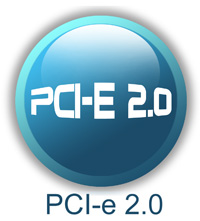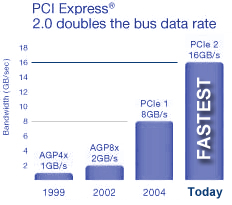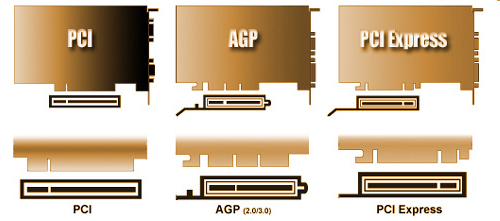PCI Express 2.0
HIS Technology, January 1, 2008
 PCI Express (Peripheral Component Interconnect Express), officially abbreviated as PCIe, is a computer expansion card standard designed to replace the older PCI, PCI-X, and AGP standards. Introduced by Intel in 2004, PCIe (or PCI-E, as it is commonly called) is the latest standard for expansion cards that is available on mainstream personal computers
PCI Express (Peripheral Component Interconnect Express), officially abbreviated as PCIe, is a computer expansion card standard designed to replace the older PCI, PCI-X, and AGP standards. Introduced by Intel in 2004, PCIe (or PCI-E, as it is commonly called) is the latest standard for expansion cards that is available on mainstream personal computers
PCI Express is used in consumer, server, and industrial applications, both as a motherboard-level interconnect (to link motherboard-mounted peripherals) and as an expansion card interface for add-in boards. A key difference between PCIe and earlier PC buses is a topology based on point-to-point serial links, rather than a shared parallel bus architecture.
The PCIe electrical interface is also used in a variety of other standards, most notably the ExpressCard laptop expansion card interface.
PCIe 2.0 is backward and forward compatible with PCIe v1.x. PCI Express 2.0 has good backwards compatibility, new PCIe 2.0 graphics cards are compatible with PCIe 1.1 motherboards, meaning that they will run on them using the available bandwidth of PCI Express 1.1. Overall, graphic cards or motherboards designed for v2.0 will be able to work with the other being v1.1 or v1.0.
PCIe 2.0 specification doubles the interconnect bit rate from 2.5 GT/s to 5 GT/s in a seamless and compatible manner. The performance boost to 5 GT/s is by far the most important feature of the PCI Express 2.0 specifications. It effectively increases the aggregate bandwidth of a 16-lane link to approximately 16 GB/s. The higher bandwidth will allow product designers to implement narrower interconnect links to achieve high performance while reducing cost.

